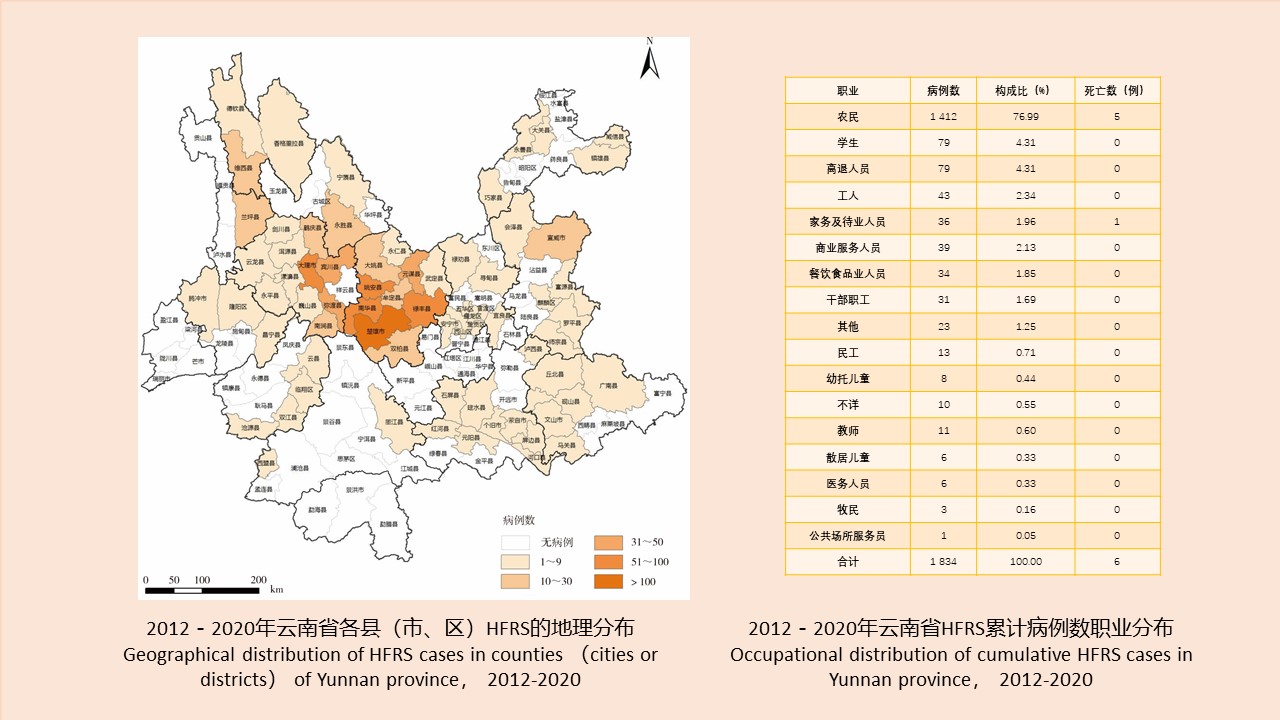 PDF(2031 KB)
PDF(2031 KB)


云南省2012-2020年肾综合征出血热流行特征分析
周济华, 张云智, 章域震, 杨卫红, 冯云
中国媒介生物学及控制杂志 ›› 2021, Vol. 32 ›› Issue (6) : 715-719.
 PDF(2031 KB)
PDF(2031 KB)
 PDF(2031 KB)
PDF(2031 KB)
云南省2012-2020年肾综合征出血热流行特征分析
 ({{custom_author.role_cn}}), {{javascript:window.custom_author_cn_index++;}}
({{custom_author.role_cn}}), {{javascript:window.custom_author_cn_index++;}}Epidemiological characteristics of hemorrhagic fever with renal syndrome in Yunnan province, China, 2012-2020
 ({{custom_author.role_en}}), {{javascript:window.custom_author_en_index++;}}
({{custom_author.role_en}}), {{javascript:window.custom_author_en_index++;}}
| {{custom_ref.label}} |
{{custom_citation.content}}
{{custom_citation.annotation}}
|
/
| 〈 |
|
〉 |